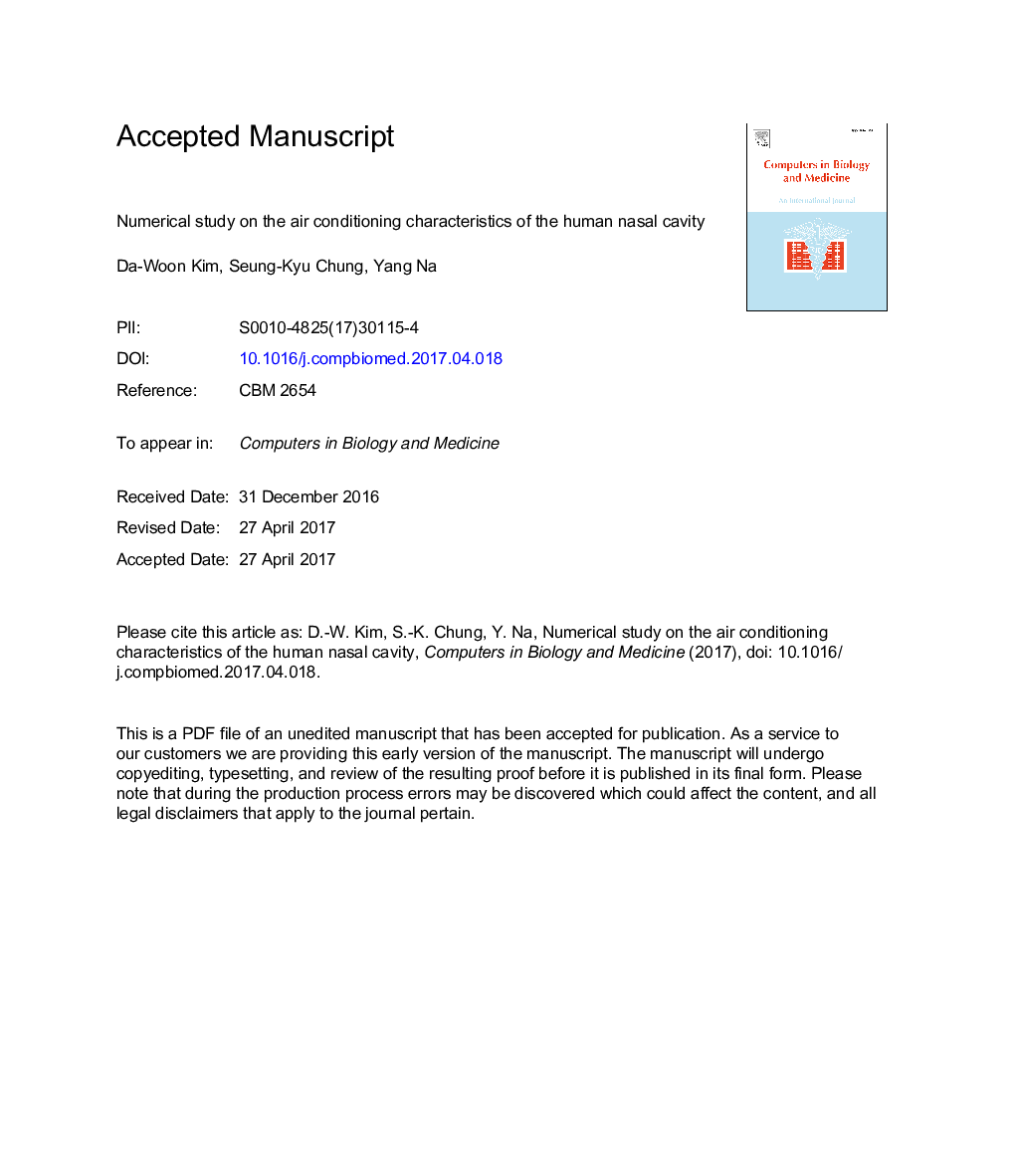| Article ID | Journal | Published Year | Pages | File Type |
|---|---|---|---|---|
| 4964966 | Computers in Biology and Medicine | 2017 | 50 Pages |
Abstract
The results show that the regions of the main airway between the nasal valve, and the anterior of the middle turbinate were shown to have relatively low temperatures, whereas the superior meatus exhibited relatively high temperature. Water vapor flux evaluated at the surface of the mucus layer was found to be quite large in the region between the posterior of the vestibule and the anterior of the middle turbinate. Comparing the results obtained from the present model to those obtained with a constant surface temperature boundary condition of 32.6 °C or 34 °C revealed that temperature, and absolute humidity of the airflow increased faster through the turbinated airway passage. Even in the presence of sizable differences in the distributions of surface temperature and water vapor concentration, distributions of relative humidity of the air were found to be quite similar regardless of temperature boundary conditions.
Related Topics
Physical Sciences and Engineering
Computer Science
Computer Science Applications
Authors
Da-Woon Kim, Seung-Kyu Chung, Yang Na,
